Ever wondered why cats have whiskers? Does it only add cuteness? What is the exact purpose of cats’ whiskers?
Well, you will be surprised to know that your feline pal’s whiskers not only give her an adorable look but actually guard them against threats, and predators. In addition, it also plays a vital role as it provides many essential functions.
So, keep on reading to educate yourself about your kitty’s whiskers’ hidden facts[1].

What Are Cat’s Whiskers for?
The ticklish feeling you get when your cats come and hug you is the feeling you get from the touch of whiskers! Though they are just a few hair strands, your cat would look absolutely funny without them! Yes, whiskers make your cat look cute.
But what are they? Why do cats have whiskers? Basically, the thick hair strands are found on your cat’s cheeks, upper and lower lips, and brows. They are made up of a protein called keratin, which is also found in cats’ claws, fur, and sheathes.
Mostly, the cat’s whiskers act as dozens of little radar sensors[2], which helps the cat to detect any obstacle present in the environment.
1. Each whisker Have Tiny, Supersensitive Nerves
Each whisker of a cat is filled with tiny, supersensitive nerves which help the cat decide if she could pass from a particular distance or space.
For example, you can judge from your height or weight, if you can fit in a particular cloth by using your common sense, in the same way, cats use their whiskers to judge distance and space.
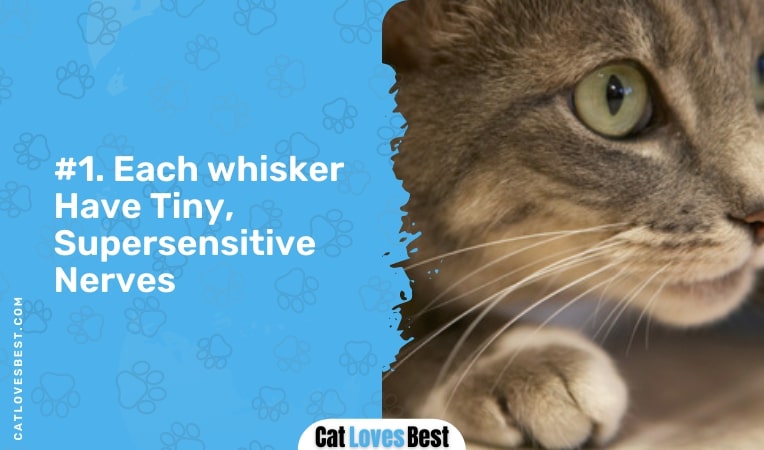
So this will help your cat in deciding if she should jump in the particular box or not, and how far she needs to jump to land right away on the box.
2. Sensory Organ at the Tip of Each Whisker
To your amusement, let me tell you, a cat’s whisker does not have only one use, but it has multiple uses, and almost each and every part of it!
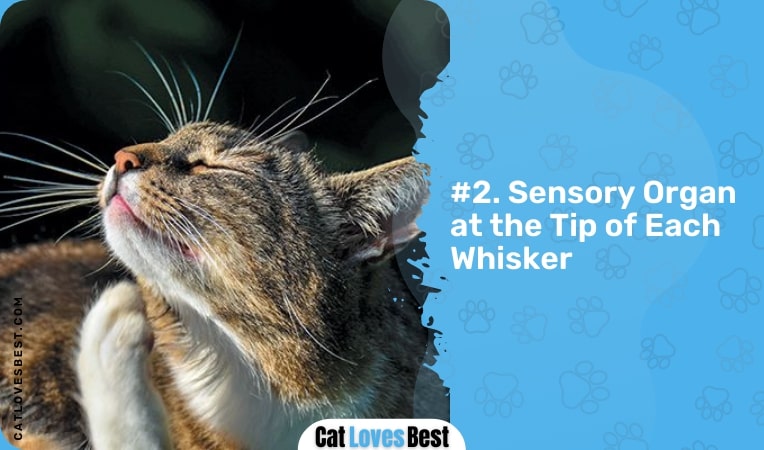
There are sensory organs at the tip of each whisker, which help the cats to pick up the vibrations in the environment. For example, a cat will be able to sense what creatures are around her way before they come into her sight. Like a group of dogs or other wild animals.
3. Whiskers, Are Not Juts on Cat’s Face!
One more interesting fact to support your question, why do cats have whiskers, is that they are not just on the face but all over the cat’s body. The most noticeable feature of cats are also present above the eyes, her chin, near the ears, on the front legs, and jaw.
Cats track their prey by the whiskers present on their legs, even the cat determines the size and distances it.
4. Back Whiskers: Help Cats to Climb
We are pretty sure that everyone had once in their life seen cats jumping from peak points like house rooftops or trees, without getting hurt. Even I used to think that how’s that possible to climb and then jump from such a height and land on the surface very smooth.

Here’s your answer, cats have whiskers on the back which helps them to hold a good grip so that they won’t fall down.
5. Cats Mood Detector
If you are a cat parent who’s thinking that, firstly, what do these cute whiskers on my cat for? And why do cats have whiskers? They can be helpful for you too, yes, up till now you must be knowing that a cat’s body language is read through the direction of her tail and ears. You can add cat’s whiskers to the list, it helps you to understand your kitty’s mood as you can easily read her facial expression.
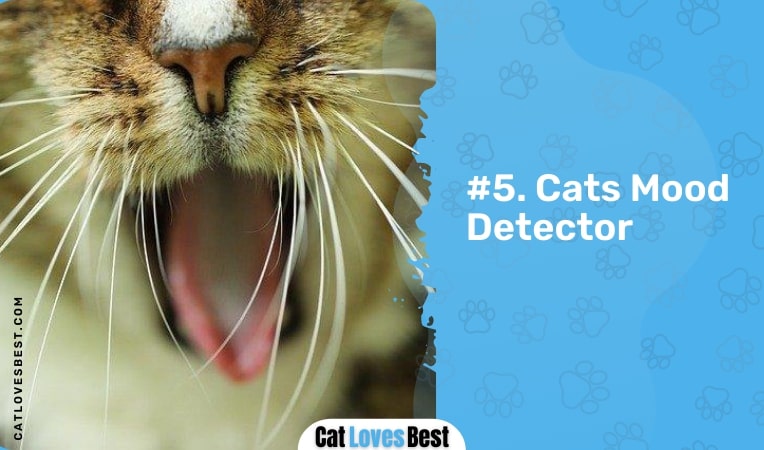
Content cat: If your cat’s whiskers are not moving that much, and they are still like her mood.
Angry cat: If your cat’s whiskers are pulled back tightly, she’s feeling scared or angry.
Happy cat: If your cat’s whiskers are pointing forward, that means she’s excited and making herself ready to pounce on.
6. Whiskers Shed Automatically
Whiskers of our cute and mighty cats are not to compare with beards of men because they shed on their own. Basically, the whiskers grow on their own, shed on their own, and again regrow on their own.
By shedding, we don’t mean to say that one day they are all gone and on the next, they all came back! No! Whiskers of any cat will shed in one or two numbers! You will hardly notice that they are gone.
The only case where you can find one or two hair of whiskers is on the couch with cats hair from other body parts.
7. Whiskers Work as a Built-in Ruler
Cats often put their head first before entering any space, just like they smell things before pouncing on them. All these are cats’ techniques to determine the possible danger or advantages of a particular thing. You can call it testing!

While entering a box or anything like that, a cat will put her head inside first and the whiskers work as a built-in ruler which helps her to measure the box, to understand if she could fit in or not. Brilliant, isn’t it?
8. Whiskers Can Change Color
You know one fact about cats’ whiskers, which can be related to humans! Just like our hair turns gray with growing age. Cats have a certain opposite reaction, their whiskers turn black from white with growing age. I bet you are wishing how amazing it would have been if this was the case with you!`
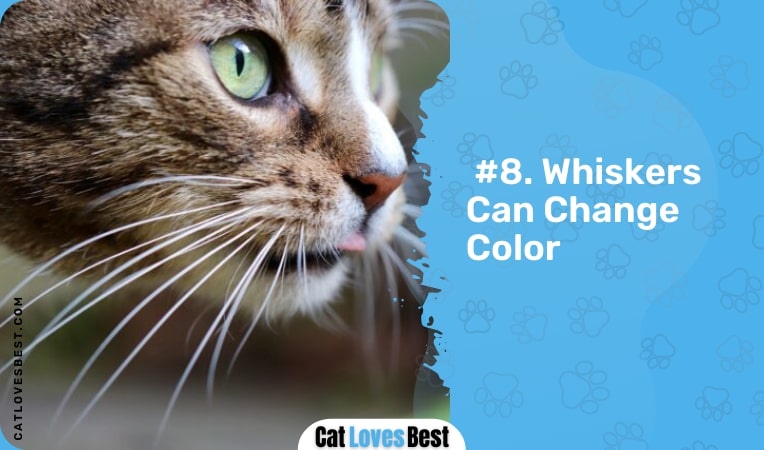
9. Night Vision Aids
One thing every cat parent is aware of is their cat’s moments during the nighttime when almost everyone else is sleeping. Call it her wittiness or mysteriousness, but the contribution of whiskers is present here also.
They help the cat to move around the house without bumping into objects!
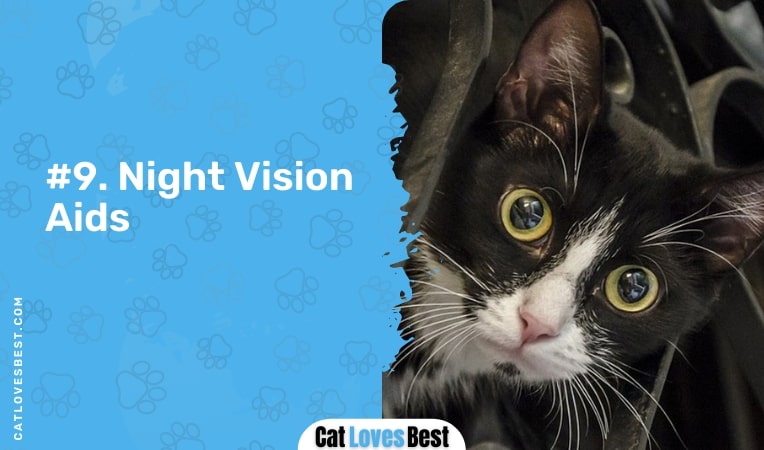
The air currents in a room vary depending on where furniture is positioned, and their perceptive whiskers pick up on this and inform their brains. Which makes it so effortless for cats to move around in the dark.
10. Cats Have Even Number of Whiskers
Why do cats have whiskers and how many whiskers do they actually have? You would be super surprised to know that cats have an even number of whiskers on both sides of its face.
11. Whiskers Are Made of Keratin
If you have a close look at your cat’s whiskers, you will see that they are thicker than most of the hair on a cat’s body, or maybe you should say that it’s pretty clear that the whiskers appear to be pretty strong and thick. they are made up of natural fibrous proteins called keratin.
So the bottom line is, that the roots of whiskers are three times deeper and three times stronger than the rest of the hair on your cat’s body.
12. Vibrissae
Long stiff hairs growing around the mouth or elsewhere on the face of many mammals are used as organs of touch; whiskers are also known as vibrissae in Latin. Which means, ”to vibrate”.
13. Whiskers Stress Is a Thing
To explain in easy words, what actually is a whiskers stress, for example, if you are drinking water from a very big glass, the water is spilling all over your face and even your nose is not spared, you won’t choose any such object to have your food or water in.
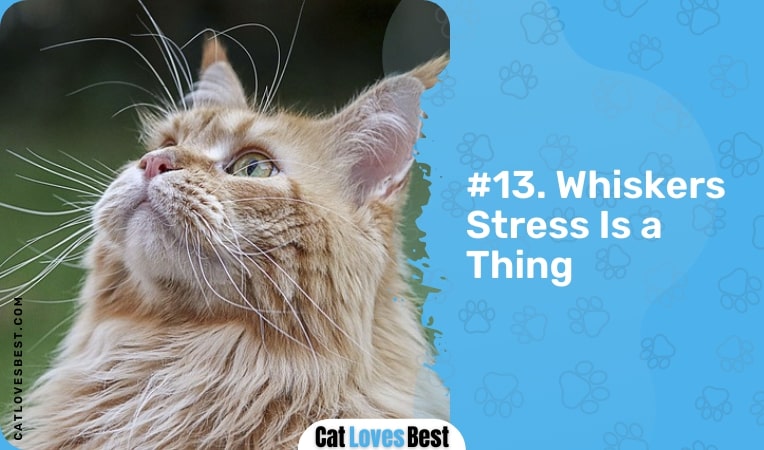
In the same way, a cat might feel stressed if the bowl is too small and her whiskers are pressed against the sides of the bowl while eating or drinking. She will feel stressed, which is also known as whiskers stress, and would choose not to eat or drink from it.
14. “Whisker Fatigue, Is a Thing”
Over-stimulation of the sensory system of the whiskers is known as whisker fatigue. If your cat refuses to eat or drink from its regular food bowl, you can take it as a symptom of whisker fatigue. This can also make your cat feel stressed and agitated.
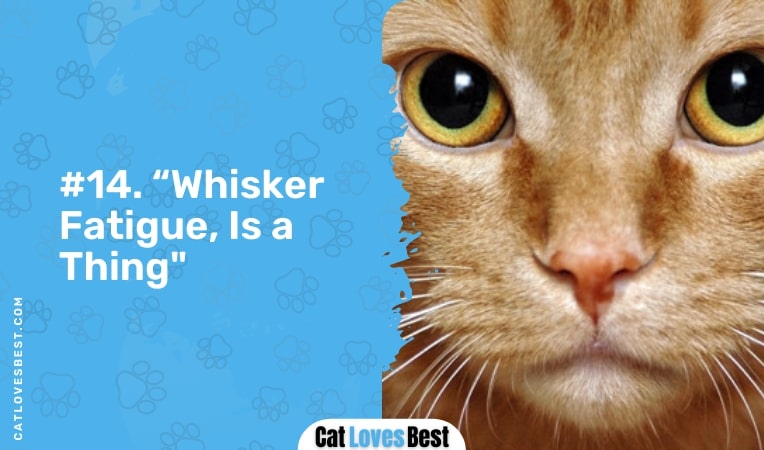
15. Some Whiskers Are Super Short
Some breeds of cats tend to develop short whiskers, hairless cat breeds, and breeds like Devon and Cornish Rex fall in this category.
16. Some Whiskers Are Super Long
Did you know, that the cat’s whiskers are so popular that they have their own Guinness World Record for a cat with the longest whiskers?
The proud cat who break this record of having the longest whiskers was “Fullmoon’s Miss American Pie,” but she is also known as Missi, a Maine Coon whose whiskers were measured at 7.5 inches in 2005.
17. Cats Have Around 12 Whiskers
When it comes to having whiskers, some cats can have fewer or more whiskers than other cats, but on average, most the cats have 12 whiskers, that are equally distributed on each side.
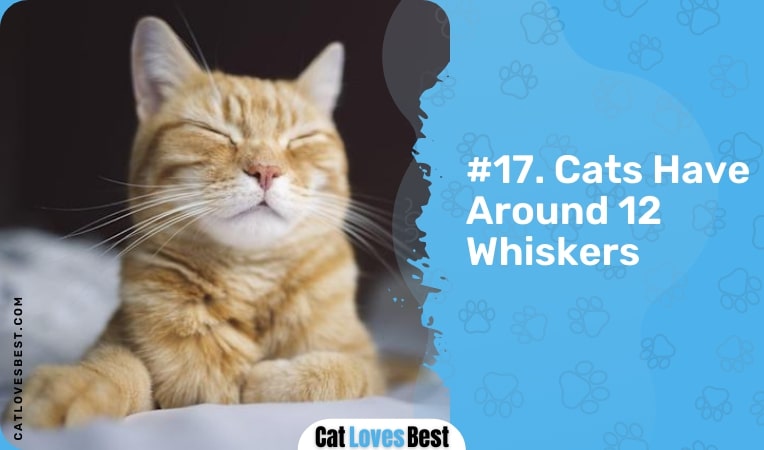
These 12 whiskers of cats are highly sensitive and lie in four rows above the upper lips of cats.
18. Never Cut Your Cat’s Whiskers!
Now, you must have been aware of the facts and reasons why cats have whiskers! The next step would be, never to try to cut or trim them! As you know now how important they are for your cats. Whisker helps a cat in many ways, so make sure you don’t pluck, cut or trim them as it would be extremely painful for them.

Conclusion
So, here we would conclude our blog on why cats have whiskers. Hopefully, we were able to give you a better understanding related to your cat’s whiskers.
Now, as you know, your kitty’s whisker not only adds an adorable look to her personality but also plays a vital role in their life. For instance, these cute whiskers navigate her and provide a sensation to protect her from threats or predators. In addition, it also gives you an idea about your kitty’s mood.
We can say that whiskers are an essential part of your kitty’s body and without their whiskers, your feline pal will lose her cuteness as well as her all hidden powers.
References:
- Why do animals have whiskers — Ask Dr. Universe
- Cat whiskers serve as a kind of radar — Virginia Tech
- Cat Whiskers — Wikipedia

